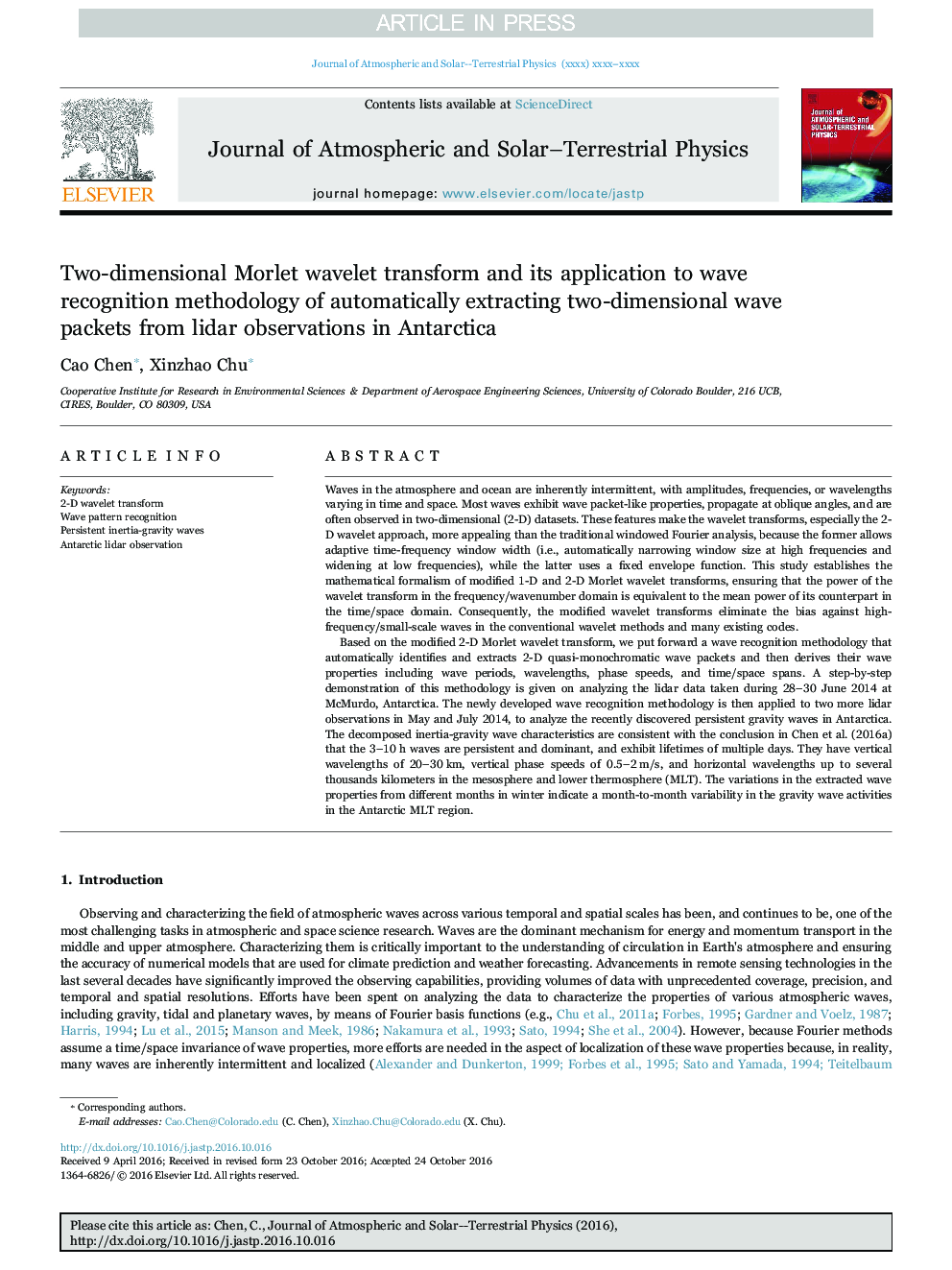| Article ID | Journal | Published Year | Pages | File Type |
|---|---|---|---|---|
| 5487563 | Journal of Atmospheric and Solar-Terrestrial Physics | 2017 | 20 Pages |
Abstract
Based on the modified 2-D Morlet wavelet transform, we put forward a wave recognition methodology that automatically identifies and extracts 2-D quasi-monochromatic wave packets and then derives their wave properties including wave periods, wavelengths, phase speeds, and time/space spans. A step-by-step demonstration of this methodology is given on analyzing the lidar data taken during 28-30 June 2014 at McMurdo, Antarctica. The newly developed wave recognition methodology is then applied to two more lidar observations in May and July 2014, to analyze the recently discovered persistent gravity waves in Antarctica. The decomposed inertia-gravity wave characteristics are consistent with the conclusion in Chen et al. (2016a) that the 3-10Â h waves are persistent and dominant, and exhibit lifetimes of multiple days. They have vertical wavelengths of 20-30Â km, vertical phase speeds of 0.5-2Â m/s, and horizontal wavelengths up to several thousands kilometers in the mesosphere and lower thermosphere (MLT). The variations in the extracted wave properties from different months in winter indicate a month-to-month variability in the gravity wave activities in the Antarctic MLT region.
Related Topics
Physical Sciences and Engineering
Earth and Planetary Sciences
Geophysics
Authors
Cao Chen, Xinzhao Chu,
